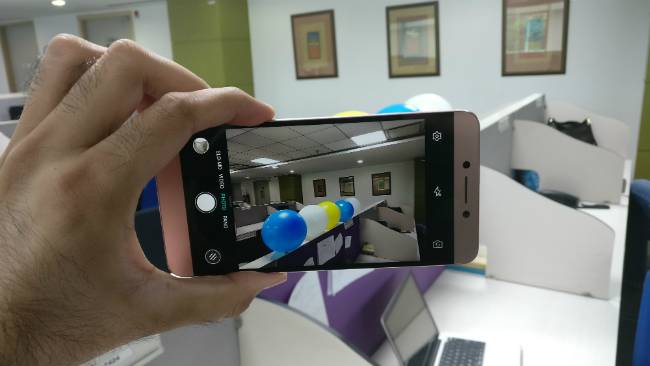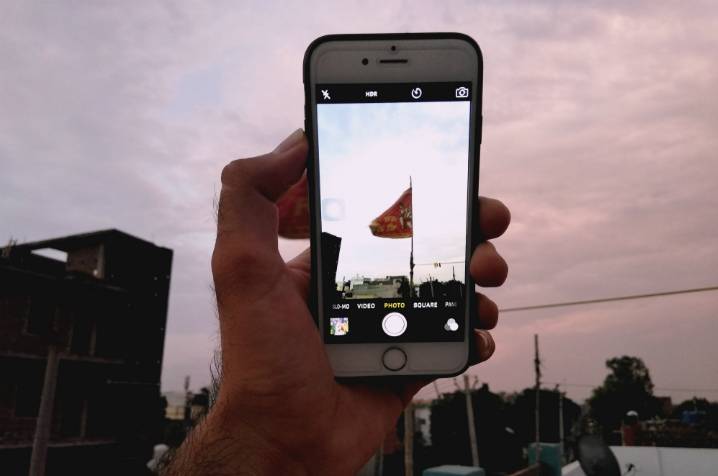TechRadar Verdict
LeEco Le 2 packs a punch and fares well when it comes to everyday usage, but the lack of microSD card slot and a 3.5mm headphone jack are a real disappointment.
Pros
- +
Crisp and vivid display
- +
Premium design
- +
Decent camera performance
Cons
- -
No microSD card expansion
- -
No 3.5mm audio jack
- -
Battery performance could have been better
Why you can trust TechRadar
Design 4/5
Features 3.5/5
Performance 4/5
Usability 4/5
Value 4/5
Le Eco, formally known as Le Tv, has become a popular name in India within a short span of time. The Chinese tech major launched its first set of devices (Le 1S and Le Max) in January 2016 that gained a lot of attention owing to their premium design, aggressive pricing and company's rich content ecosystem.
The company expanded its product portfolio with the launch of Le Eco Le 1S Eco, a revised version of the Le 1S and recently came out with the second generation Le smartphones - Le 2 and Le 2 Max.
The Le 2, which we have reviewed, is also an important handset for the company as it's an attempt to gain market share in one of the most competitive price segments - the sub Rs 15,000. LeEco Le 2 directly competes with two widely popular smartphones - Xiaomi Redmi Note 3 and Moto G4 and here is how it performs.
Specifications
Display: 5.5-inch Full HD (1920x100) display, 403ppi
OS: Android 6.0.1 Marshmallow with EUI 5.6
CPU: 1.8GHz Qualcomm Snapdragon 652 octa-core SoC, 3GB
Storage: 32GB storage (no microSD card slot)
Cameras: 16MP f/2.0 rear camera (dual-tone LED flash), 8MP f/2.2 front camera
Connectivity: Wi-Fi, 3G/4G/2G, GPS, Bluetooth, USB Type C charging port, USB OTG
Battery: Non-removable 3,000mAh
Dimensions: 151.10 x 74.20 x 7.50 mm
Weight: 153 grams
Price: Rs 11,999

Design
LeEco's design language hasn't evolved much in the past two months. The second generation Le smartphone is identical to its predecessor and only brings some minor changes to the table. The camera sensor is now shifted to centre and is now much larger in size when compared with the camera module on the Le Eco Le 1. The fingerprint sensor has also been revamped and is now square in design.
The biggest differentiating factor is the lack of a 3.5mm headphone jack. As per LeEco, the company has developed its own standard for digital audio i.e. CDLA - Continual Digital Lossless Audio. LeEco claims that when combined with the company's CDLA earphones, the smartphone offers the best-in-class audio quality. We tried the earphones and the audio qulaity is really good. The sound is crystal clear, pleasingly loud but a bit light on bass.
However, we cannot ignore the fact that the world has accepted the 3.5mm headphone jack as the standard audio playback medium. The CDLA technology is fairly new for consumers and will take time to replace the 3.5mm audio jack. Moreover, you cannnot charge the phone while listening to music as the Type C USB port serves the purpose for the both. So you have to compromise on one aspect, which is again a disappointment.

Another important point here is the affordability of the 3.5mm earphones. While, you can easily get a decent 3.5mm earphones/headphones for as low as Rs 500, LeEco is charging a sum of Rs 1,990 for its CDLA earphones. This can be a deal-breaker for consumers who can simply buy the Xiaomi Redmi Note 3, Moto G4 or any other similarly priced smartphone with a standard 3.5mm audio jack. To minimise some loss, the company is offering a CDLA-to-3.5mm converter in the package that can be utilised for audio playback. It will allow you to use your regular 3.5mm earphones with the LeEco le 2. So make sure you don't let it get away from your sight.
Coming on to other aspects, LeEco Le 2 is also lighter than the previous Le 1S. It weighs 153 grams and feels quite light for a 5.5-inch smartphone. One-handed operation was not an issue with the handset. The volume rockers and the power button are placed ergonomically on the right side and the SIM card tray is positioned on the left spine.

The bottom has the Type C port and the speaker units, only one of them (the right) is functional as the other one is just to match the symmetry.
Overall LeEco Le 2 is an attractive looking handset with premium design but misses on a very important factor (the 3.5mm headphone jack) that can be a deal-breaker for consumers.
Hardware
The Le 2 is the first smartphone in India to come with the Snapdragon 652 SoC. It is an Octa-core processor clocked at 1.8 GHz paired up with 3GB of RAM to handle the multitasking. The company claims that the Snapdragon 652 CPU is the world's most powerful octa-core CPU and performs 21% better than the Snapdragon 800 SoC. Moreover LeEco said that the 652 even outperforms the Snapdragon 808, which was the last year's flagship CPU.
The smartphone comes with a non-removable 3000mAh battery and has 32GB internal memory, which is unfortunately not expandable.
As far as connectivity goes, the smartphone supports 4G LTE and 3G bands with a dual SIM setup - one micro SIM card and the other nano. There is Wi-Fi 802.11, Bluetooth 4.0, GPS and USB 2.0 Type C port as other connectivity features.

Display
The 5.5-inch full HD display on Le 2 is one of the highlights of the smartphone. It churns out a pixel density of 403ppi that makes icons, texts, images and everything else look adequately crisp. The colour reproduction is also good and the smartphone serves as a good multimedia handset to watch movies or play graphic intensive games. The underlying software on Le 2 allows you to tweak the colour levels of the IPS display. You get a number of modes - LeECo, Vivid, natural and Soft to change the colours as per your liking.
Performance
LeEco Le 2 with its octa-core Snapdragon 652 chipset performed quite well in everyday usage. Application loading was quick and smartphone handled almost everything we threw at it without breaking up a sweat. The 3GB RAM also made sure that multiple applications run simultaneously without any lags. However, we noticed signs of heating while playing graphic intensive games or shooting videos, even when the resolution was set to 1080p format. But it was nothing major and the handset cooled down shortly.
The LeEco Le 2 runs on company's own EUI 5.6 running atop Android Marshmallow v6.0.1. While, the UI is appealing, full of lively colours and feels snappy in everyday usage, the amount of customization done by Le Eco will not be liked by users who are fond of stock Android. There's no app drawer (like most of the smartphones from Chinese brands), the quick settings is now a part of app switcher, which looks like iOS's control centre with some extra options. It allows you to toggle the commonly used functions such as Wi-Fi, GPS, Bluetooth, etc. The OS is devoid of unnecessary bloatwares and the stock apps such as Notepad, Calculator, Clock, etc. follows a subtle and minimal design approach.

LeECo has also updated the themes and wallpaper section with some new additions.
Besides, you get one year free subscription of LeEco's content ecosystem, which as per LeEco is worth Rs 4,900. You can renew your subscription after a year if you feel it's worth it. The content eco-system is one of the key businesses of LeEco in the homegrown market and the company wants to expand its horizons towards India, which is one of the fastest growing markets in the world.
It covers all bases with regards to TV shows, movies as well as music. The TV content and movies are provided by YuppTV and Eros Now and gives you access to Bollywood and regional movies, Tv channels, music and more. The Le Music will give you access to over 3.5 million songs from 25 different languages in partnership with Hungama once it goes live in Q3 2016.
Further, a 5TB of cloud storage can also be accessed when you make a LeEco account.

Camera
The LeEco Le 2 comes with a 16MP, f/2.0 rear camera with a dual LED flash and a sensor size of 1/31" inches. It is capable of recording 4K video at 30fps and 720p slow motion video at 120fps. The front shooter is an 8MP affair with an aperture of f/2.2.
The 16MP rear camera is a capable shooter that quickly focuses the object and results in decent images. While the detailing is not the best in the segment when you zoom in the images, the sensor captures good amount of lighting to result in images with natural colours. The macro shots also turns out to be good and the rear camera really does a good job in 1080p and 4K video recording. The camera performance in low-light is decent but does not match the likes of Xiaomi Redmi Note 3.
Besides, the 8MP front camera is capable enough to make you look good in selfies or during video calling.
Here are some camera samples




Battery
LeEco Le 2 lasted a full day with moderate usage, however heavy users, who are always hooked to the smartphone for games, videos, etc, have to keep a charger or a power bank handy with them. The Xiaomi Redmi Note 3, which also sells at the same price-point integrates a bigger 4,050mAh battery unit that survives longer than the smaller 3,000mAh battery unit that powers the Le 2.
Besides gaming and video playback, we also noticed that the camera usage takes a toll on battery backup, especially when you are shooting videos.
Likes
At its price-point, LeEco Le 2 offers a premium design, crisp 1080p display and decent camera performance. The smartphone with its content ecosystem will please consumers who are fond of consuming multimedia content such as movies, TV series, songs, etc.
Dislikes
The lack of standard 3.5mm headphone jack and microSD card slot will come as a disappointment for consumers. Besides, the battery performance could have been better.
Verdict
LeEco is selling the Le 2 at Rs 11,999 and this makes the smartphone a great value for money proposition. The smartphone with the underlying hardware makes sure that you get everything done without any problem. The 1080p display makes it a budget multimedia handset and the camera performance is also good. The only thing that will restrict someone buying the smartphone is the lack of 3.5mm headphone jack and the microSD card slot.
Other options that you can consider are Xiaomi Redmi Note 3 and Moto G4 Plus.
Rohit Arora is the Senior Correspondent at Gizbot, OneIndia. He has been exploring technology since early 90s and started working with Print media in 2014. After writing for PC Quest, Voice & Data and Data Quest for over 14 months, I joined TechRadar in 2016 (Noida). Rohit provides strategic ideas to leading tech brands for new product launches and marketing campaigns.

